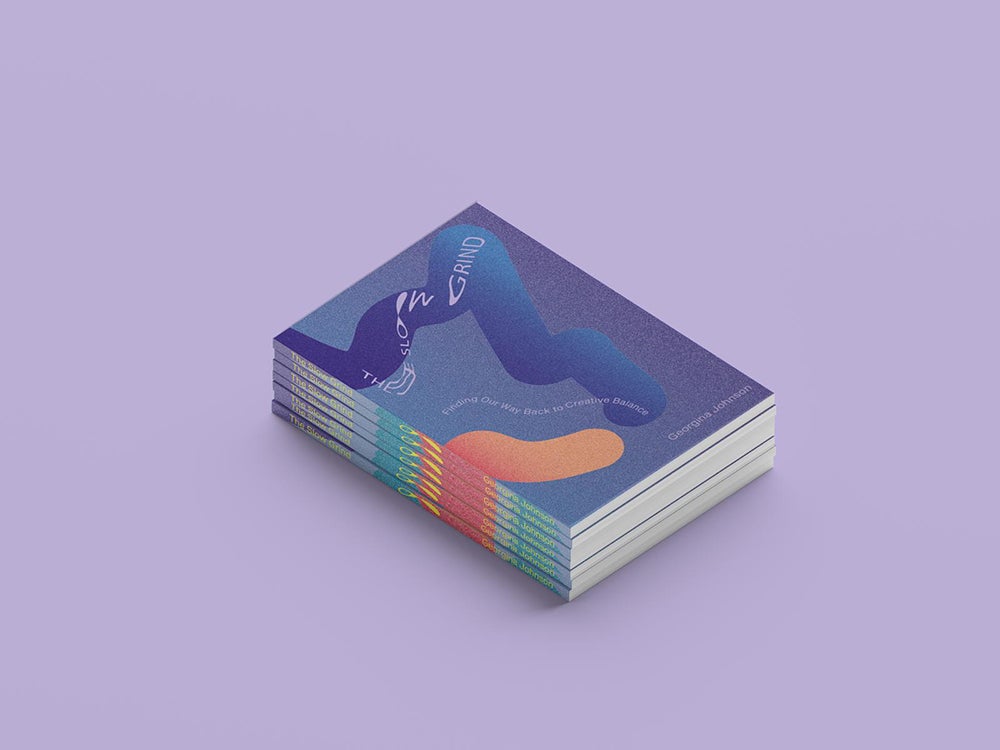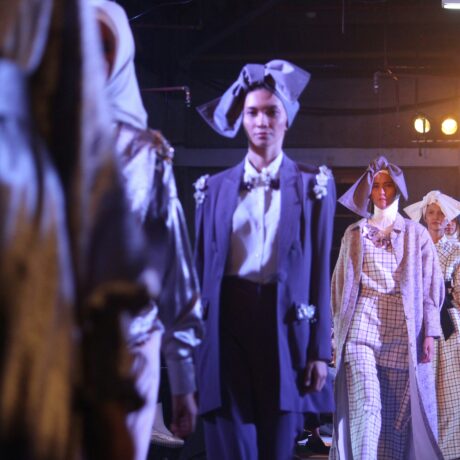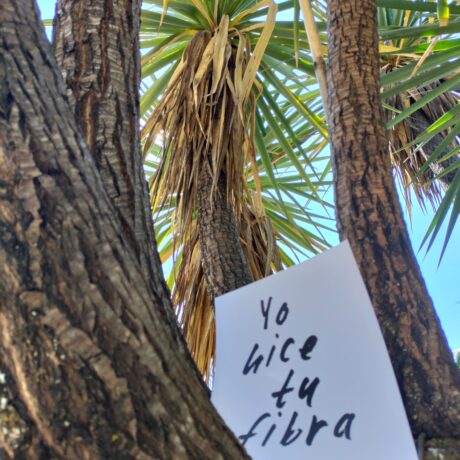Repair, Regenerate and Reimagine: A new approach to climate justice
Intersectional environmentalism is the lens through which all conversations about climate justice must begin. Georgina Johnson believes that by drawing on care, creativity and compassion, we can use this lens to connect the social, environmental and even spiritual issues within sustainable fashion in order to reimagine new systems that are restorative rather than reductive. The Slow Grind, Georgina’s seminal book published in 2020 and returning to print for a second wave of change, explores questions that relate to the condition of our world, the makeup of our cultural industries and the future of our communities and ecosystems. It presents an invitation that hopes to encourage the process of recovery through unlearning.
View this post on Instagram
With contributions from the likes of Wilson Oryema, Kimberly Jenkins, Caryn Franklin, Bethany Williams and Campbell Addy, alongside Fashion Revolutionaries Tamsin Blanchard and Orsola de Castro, The Slow Grind presents a series of thought-provoking essays and creative conversations that open up new ideas about systemic change in the fashion industry and beyond. Drawing from the 5 principles of The Slow Grind’s methodology, we talked to Georgina about rethinking and repairing oppressive systems.
Why is it important to address histories of oppression and destruction in order to move forward?
It’s important to understand and frame the why behind where we are at today. The story of oppression and destruction spans ethnic groups and places, but I certainly feel the culture that is prevalent today is deeply linked to Britain and its position as a colonial power. Sam Wetherall wrote for the Tribune earlier this year in a piece about our current food systems: “The history of the climate crisis is inextricable from the history of Britain”. This sentiment is echoed and examined in further detail in Kathryn Yusoff’s ‘A Billion Black Anthropocenes or None’ (2018), which goes into detail about a history of the extraction of both people and resources.
To move forward we have to admit and choose to refute this willful blindness towards the intentional violence of imperial powers towards communities that cannot seem to get a leg up today. Until we do this – and I mean really do this – progress will continue to ebb and flow.

How can we develop responses to these problems that take an intersectional approach?
I love the term ‘Biophilia’. It suggests that our connection with nature is genetic. Beyond that, there has always been an internal knowing, I feel especially in BIPOC communities, of the benefits of living and growing with the land. It’s something that my grandparents and elders that brought me up seeded in me. The way that we approach and live life is inherently intersectional. We humans just like to complicate things in order to commodify and objectify so that we can profit. But when you tune in to this knowledge, you will immediately see the intricate connections.
So practically; refuse to see ‘sustainability’ as a monolith. Place conversations side by side and weave them in and out of each other so you can see the relationship between each thing that you may have viewed as separate, come alive. It takes a certain amount of unlearning.
What role does creativity play in communicating and connecting the issues of climate justice and social justice?
I’ve been recording ‘The Slow Grind’ Podcast all year with various guest hosts, doing it slowly and incrementally. Admittedly, it’s my first time producing a podcast. It’s low-fi but seriously incredible. I’ve been able to connect with and speak to some of the most impressive womxn meshing the practices of art and science seamlessly. That takes creativity.
Something I have so much admiration for is the ‘Save Mollem’ campaign based in Goa, India. It is a brilliant example of utilising creativity to enact change in this sphere. The dance between climate and social justice is played out in front of our eyes and is responded to through the aims of this campaign. Curator Cairo Clarke and I had the honour of speaking to marine conservationist and campaigner Gabriella De Cruz – who also runs @thegoodocean a research project focused on mapping native species and local seaweed forests in India.
Gabriella spoke to us in detail about the ‘Amche Mollem Campaign’. Amche Mollen is a citizen-run movement to protect Mollem National Park which is Goa’s largest protected area. Horrifyingly, but unsurprisingly, whilst the population were trying to safeguard themselves and their families against the Covid-19 virus, the National Board for Wildlife stamped their approval on 16 proposals that threaten significant and vital biodiversity hotspots and national parks.
In conjunction with a proposal already accepted in 2019 to cut through Mollem with a rail line, the new proposals continued to pose devastation to the area. The #savemollem campaign said NO! What Gabriella explained to us was how important the meetings of minds have been to this campaign. The young people leading this campaign are artists, writers, lawyers, scientists, architects, filmmakers, illustrators, researchers… the list goes on. Please go and read about and support this campaign in any way possible.
Ultimately climate justice issues are social issues. They affect people and the land they inhabit, they affect the link between absolutely all living things – human and non-human. By utilising the power of creativity as one of the most powerful resources we have, we allow big ideas and big conversations to be small and tangible. Creativity speaks to everyone, where some other methods don’t.
View this post on Instagram
Why is care, for ourselves, our communities and for the planet, important in the struggle for a more sustainable and just future?
The bogus report of 2020 that looked into the racial disparity in Britain comes to mind here. It might have well of been written by Priti Patel – someone who, I’m really unsure if it is purposeful or a response to a history of racial gaslighting, continues to enforce structural racism. I do believe that structural racism is one of, if not the most pervasive forms of racism, because of how it allows for and makes it difficult to challenge white supremacy and privilege (embedded in policies and practices, especially in government) . Anyway, this report – you can read various summaries online – surmised in short that yes racism does exist but really doesn’t have that big of an effect on the life chances of certain British folk over geography and socio-economic background. Isn’t that so interesting? Aren’t all three of those things sort of part of a morphing trinity of factors affecting most racialised communities in Britain and most parts of the world in general?
One of the biggest shames in the report being that they dare quote Linton Kwesi Johnson, who for many is a rebel and flag-bearer for those of us with immigrant parents and grandparents. One of my favourite poems of his is ‘Inglan’ Is A Bitch’. They missed the opportunity to confront a large part of the population’s ideas around race and effectively produce something that could have been a blueprint for real change.
Is that care for the community? In the same year we heard on the news and saw, some of us too vividly, the effects of the virus on Black and Brown communities especially. For many, this was directly linked to geography. So if the communities most populated in geographic areas are the ones contracting this disease at a faster rate and dying more, then isn’t it connected to the fact that they are more likely to have less social and economic mobility? Let me delve small small; so they are packed into areas like a deck of cards, nearly living on top of each other, which are no less areas that are more likely to be near factories and industrial sites – emitting pollutants consistently – so their health is affected in a multitude of ways. On top of this, the chances of social distancing consistently in such areas are kind of a myth. To add to this, a lot of folks in these particular communities do not have the opportunity to “stay at home” at all, thanks Boris. Place, race, pence£ might as well be interchangeable.
Where do we start when it comes to imaging new realities to our current systems?
I have a few favourite quotes from the book. There is probably one or two in every piece because it is packed with honest ideas and plain as day solutions. Adele Orcajada of Material Driven – a design agency and materials library – says something incredibly apt in her think-piece:
“[The] concept [of sustainability] has already become obsolete. In a ‘sustainable’ system, the ambition is to avoid the depletion of natural resources in order to maintain a balance. However, once ecological systems are lost or damaged… balance is not enough. ‘Regeneration’ must come into play.”
What she is doing here is driving a rod through the conception of ‘sustainability’ that lives in the minds of most people. We have been marketed the idea that we can contribute to building a sustainable society/world by buying more and recycling more but that is just dressing capitalism up in a new headscarf. What capitalism does not want us to address or understand as a society is that we can’t go back. No matter how much we recycle. What Adele is proposing here though, is a way forward, one that recognises the damage that we have created and suggests how we can actually help nature replicate itself and communities repair themselves through their magnetic unrelenting adaptiveness
View this post on Instagram
Further reading: https://www.fashionrevolution.org/the-revolution-begins-with-care/
Pre-order the book: https://www.theslowgrind.world/








